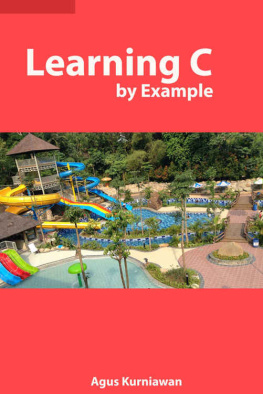About the Reviewers
Quintessence Anx . is a superhero (also called as Cloud Engineer) at Stark & Wayne LLC by day and an astronomer with a passion for the Internet of Things by night. She is a chapter leader for her local Girl Develop It, where she empowers women programmers of all levels and abilities through classes and hands-on project experiences, as well as co-founder of City of Light 2.0, an organization working to bring more affordable, reliable, and faster internet to Western New York
Parth Desai is a polygot programmer and architect, and has worked on almost all popular languages like Golang, python, C#. He regularly contributes to various open-source golang projects, like a notification engine called Khabar, a http framework written in golang called Gottp, and media server called moire. He implemented url signing protocol using cryptography in python, from scratch.
He has also written custom single sign on solution (SSO) in c#, with proper implementation of oauth and saml protocols. He also developed pluggable architecture to facilitate easier adding and removing of authentication providers for the SSO. Currently, He is working as a lead backend engineer, and designing and implementing scalable systems in golang and python. You can reach out to him on linkedin at https://in.linkedin.com/in/parthdesai08. Or on his email-id desaiparth08@gmail.com.
Abhishek Kumar is a technologist in IT Industry since 2010 mainly working in Systems Programming, DevOps Practices and Security. He likes to keep in sync with all domains, paradigms and up-coming technologies to get a wholistic approach for problem solving and planning ahead. He loves to learn new programming languages. Abhishek has been using Golang since 2012. He started a timeseries datastore project in Golang by Sep'2013 and is currently pivoting it. [ @abionic | https://abhishekkr.github.io ]
Want to thank my mother ShivPyari to enable me choose my own path
Chris Schaefer software developer with a passion for learning new things. He enjoys writing code and participating in local community software events.
www.PacktPub.com
For support files and downloads related to your book, please visit www.PacktPub.com.
Did you know that Packt offers eBook versions of every book published, with PDF and ePub files available? You can upgrade to the eBook version at www.PacktPub.com and as a print book customer, you are entitled to a discount on the eBook copy. Get in touch with us at service@packtpub.com for more details.
At www.PacktPub.com, you can also read a collection of free technical articles, sign up for a range of free newsletters and receive exclusive discounts and offers on Packt books and eBooks.
https://www.packtpub.com/mapt
Get the most in-demand software skills with Mapt. Mapt gives you full access to all Packt books and video courses, as well as industry-leading tools to help you plan your personal development and advance your career.
Why subscribe?
- Fully searchable across every book published by Packt
- Copy and paste, print, and bookmark content
- On demand and accessible via a web browser
Preface
Go is an open source programming language that lets programmers easily build reliable and scalable programs. It does this by offering a simple syntax which makes it fun to write correct and predictable code using concurrency idioms and a robust standard library.
Go has a large and active online community and there are several Go conferences that take place around the world yearly. Starting with https://golang.org/, you will find numerous places on the web that provide documentations, blogs, videos, and slides that cover a wide range of Go-related topics. On GitHub, the story is no different; some of the best known projects that are driving the future of cloud computing, for instance, are written in Go with an ever growing list.
As you would expect, getting started with Go is simple, fast, and well documented. However, getting into Go can be more challenging, especially for newcomers from other languages. My first attempt at Go failed. Even after reading the prescribed documentations and going through the tutorials, there was a gap in understanding driven by my own biases from previous programming experiences. Months later I returned to Go and got into it. This time I read the language specs, I read blogs, watch videos, and searched the web for any discussion that provided design motivations and in-depth explanations of the language.
Learning Go is a book intended to help new, and seasoned programmers alike, to get into the Go programming language. With this book, I have attempted to write the book I would have like to have read when I was starting out with Go. It distills the language specs, the documentations, the blogs, the videos, slides, and my own experiences of writing Go into content that carefully provides the right amount of depth and insights to help you understand the language and its design.

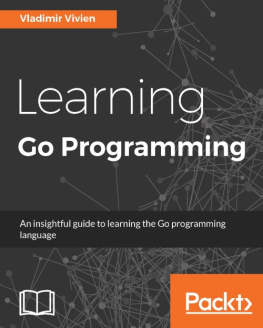
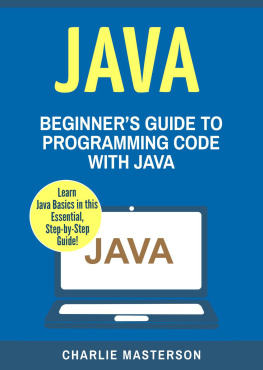

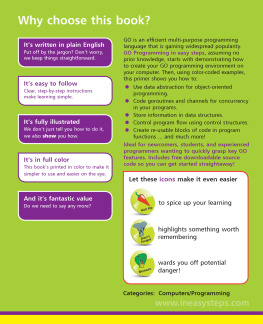
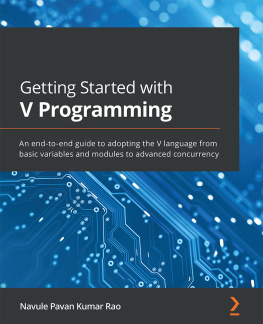


![Mark Lassoff [Mark Lassoff] - Java Programming for Beginners](/uploads/posts/book/119362/thumbs/mark-lassoff-mark-lassoff-java-programming-for.jpg)

